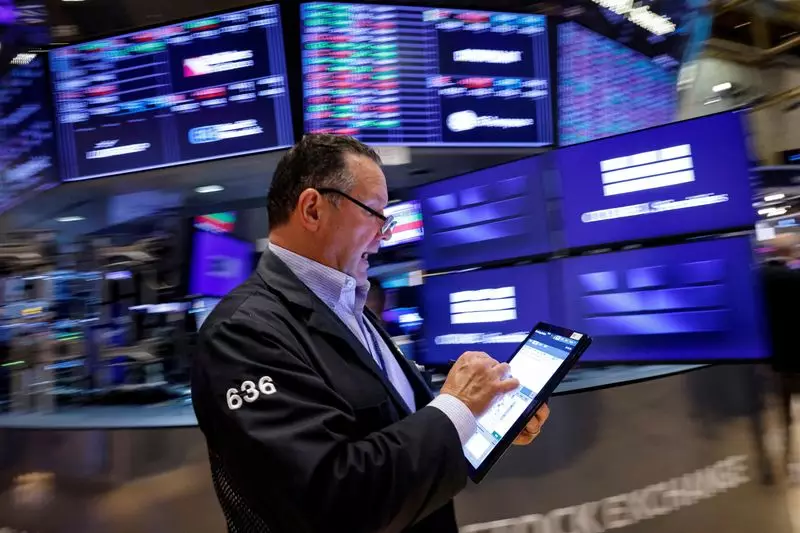The recent surge in Wall Street stocks and the Dow reaching an all-time high were largely attributed to fresh U.S. economic data which hinted at a potential interest rate cut by the Federal Reserve in September. The solid increase in consumer spending during July showcased the strength of the economy while moderate price rises indicated stability. Investors viewed this as a positive sign of a soft landing, prompting optimism in the market.
The concept of a “just-right” Goldilocks economy, characterized by steady growth without excessive inflation, resonated with investors. This balance is crucial for sustaining economic stability and avoiding potential pitfalls associated with extreme growth or deflation. The market responded favorably to reports aligning with this ideal economic scenario, resulting in significant gains for companies like Amazon, Tesla, Broadcom, and Marvell Technology.
The anticipation of an imminent policy adjustment by the Federal Reserve was reinforced by Fed Chair Jerome Powell’s recent indications of support for rate cuts. The upcoming economic data release, including the Labor Department’s August jobs report, will serve as a critical factor in shaping the Fed’s decision. Traders are now speculating on the possibility of a 25 basis point rate cut in September, with reduced odds of a 50 basis point cut following the latest data insights.
Market Volatility and Recovery
The past month witnessed significant market volatility triggered by concerns of a U.S. recession amid labor market fluctuations. The influence of the Japanese yen carry trade exacerbated the situation, leading to a downturn in share values. However, a gradual rebound has been observed, with the S&P 500 nearing record highs. The recovery trajectory reflects market resilience and investor confidence despite temporary setbacks.
Certain individual stocks experienced notable fluctuations in response to market dynamics and company-specific developments. Nvidia rebounded from a previous drop after releasing optimistic results, while Novavax surged following FDA authorization for a COVID shot update. Conversely, Ulta Beauty faced a decline due to revised forecasts, and Intel saw a significant rise amid rumors of strategic options. Dell Technologies and Trump Media & Technology Group also witnessed varying stock performances, underscoring the diverse impacts of market factors on specific companies.
The month concluded with positive market performance, as evidenced by the S&P 500 rising by 2.3%, the Dow adding 1.8%, and the Nasdaq climbing 0.6%. Sector-wise, consumer discretionary and industrials were among the top gainers, reflecting broad-based market optimism. The overall market sentiment remained positive, with advancing issues outnumbering falling ones, signaling confidence among investors despite initial uncertainties.
The interplay between economic data, policymaker decisions, market volatility, and individual stock performances underscores the complex nature of Wall Street dynamics. While short-term fluctuations and uncertainties persist, the overarching trajectory of the market reflects resilience, adaptability, and optimism among investors and stakeholders. Going forward, monitoring key economic indicators and corporate developments will be essential for navigating the evolving landscape of Wall Street stocks and financial markets.

